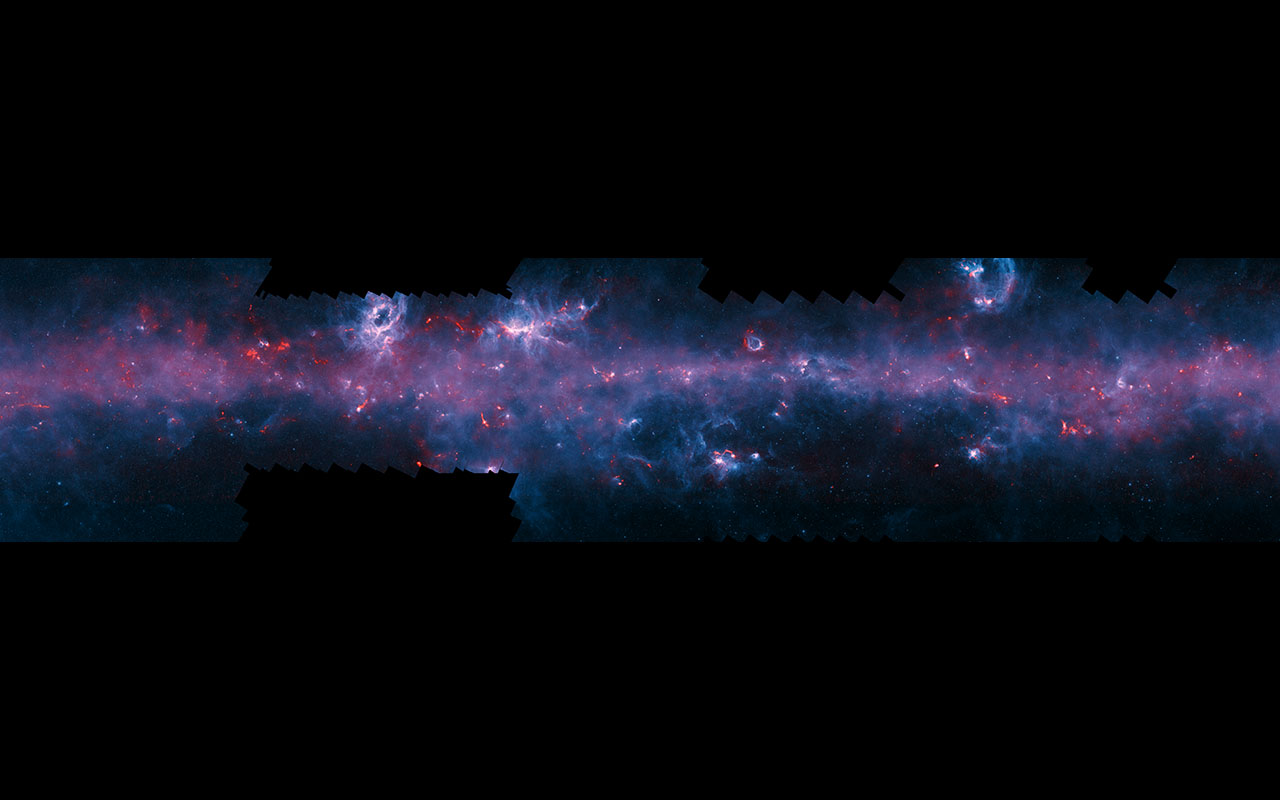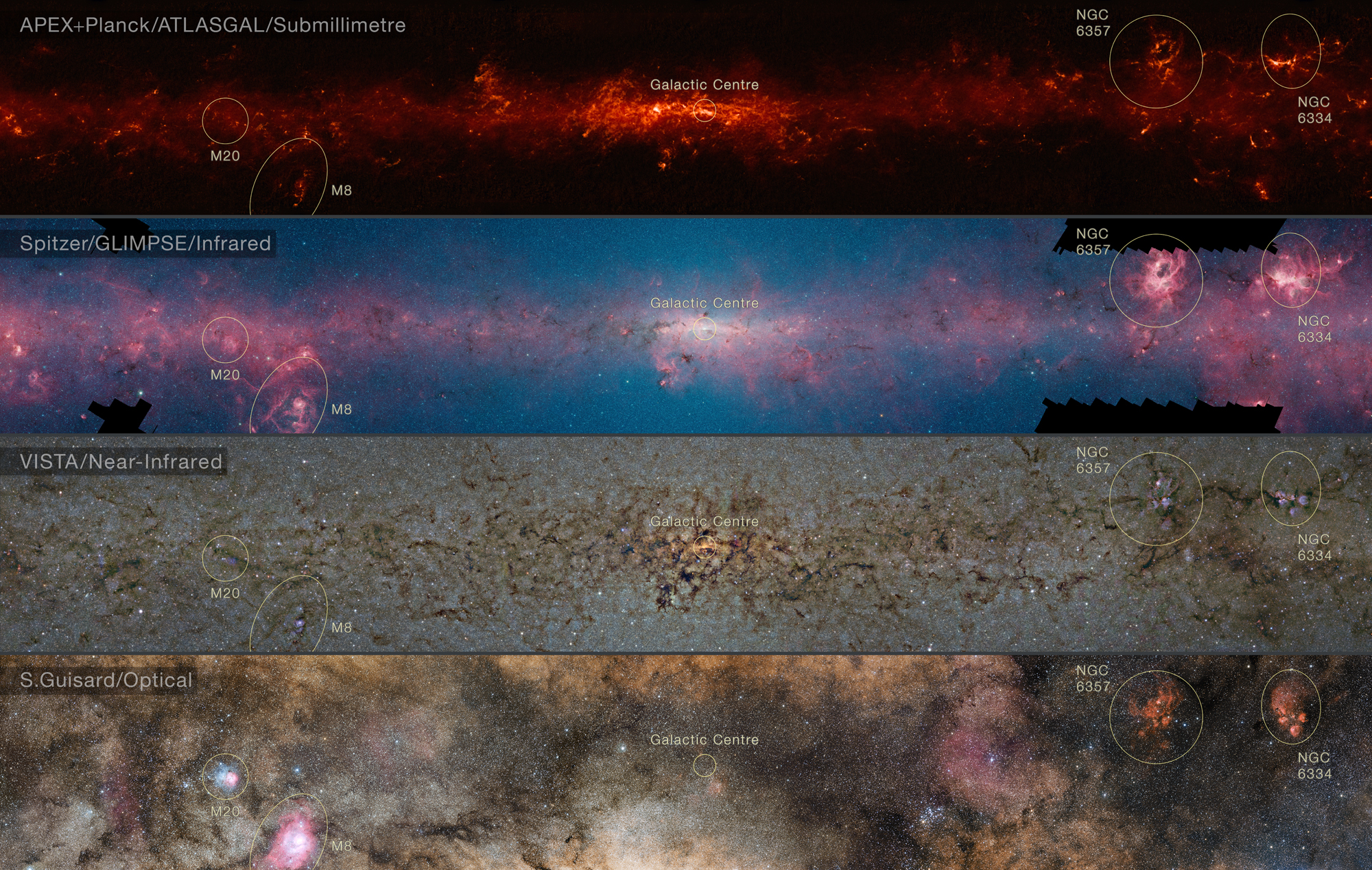Incredible New View of the Milky Way Revealed (Video)

An incredible new picture of the Milky Way shows our home galaxy glowing eerily in wavelengths that are invisible to the human eye, revealing zones of hidden star birth.
Shining in submillimeter wavelengths (between infrared light and radio waves), the Milky Way stretches across the new image, which was taken using the APEX (Atacama Pathfinder Experiment) telescope in Chile. Besides providing a pretty picture, the research is allowing astronomers to look at gas and dust in the galaxy that is only a few tens of degrees above absolute zero. More of the Milky Way's hidden light can be seen in this video from Space.com.
The picture is part of a survey called APEX Telescope Large Area Survey of the Galaxy (ATLASGAL). The survey was done in part to learn the locations of newly born stars, which are inside huge, cold clouds that are tough for scientists to see. Astronomers also estimated gas density by combining APEX's results with those from the European Space Agency's Planck telescope.
"ATLASGAL provides exciting insights into where the next generation of high-mass stars and clusters form," Timea Csengeri, from the Max Planck Institute for Radio Astronomy, who led the work of combining APEX and Planck data, said in a statement from the European Southern Observatory, which operates APEX.
"By combining these with observations from Planck, we can now obtain a link to the large-scale structures of giant molecular clouds."
Within the new image, astronomers now have the locations of most star-formation regions in the southern Milky Way. The complete ATLASGAL map covers an area of sky 140 degrees long and three degrees wide, which is four times the area captured from the first ATLASGAL map, and is made of higher-quality imagery, the statement said. The ATLASGAL data was provided by an APEX instrument called LABOCA (LArge BOlometer Camera). The instrument is designed to register temperature changes on the detector from incoming light, and is sensitive enough to record tiny fluctuations from dust.
APEX has been in operation for 10 years. It served as a prototype antenna for the Atacama Large Millimeter/submillimeter Array, which is a newer array of dozens of telescopes in the same area of Chile. Many of APEX's targets will likely be surveyed by the more powerful ALMA, ESO stated.
Get the world’s most fascinating discoveries delivered straight to your inbox.
Follow Elizabeth Howell @howellspace. Follow us @Spacedotcom, Facebook and Google+. Original article on Space.com.

Elizabeth Howell was staff reporter at Space.com between 2022 and 2024 and a regular contributor to Live Science and Space.com between 2012 and 2022. Elizabeth's reporting includes multiple exclusives with the White House, speaking several times with the International Space Station, witnessing five human spaceflight launches on two continents, flying parabolic, working inside a spacesuit, and participating in a simulated Mars mission. Her latest book, "Why Am I Taller?" (ECW Press, 2022) is co-written with astronaut Dave Williams.




